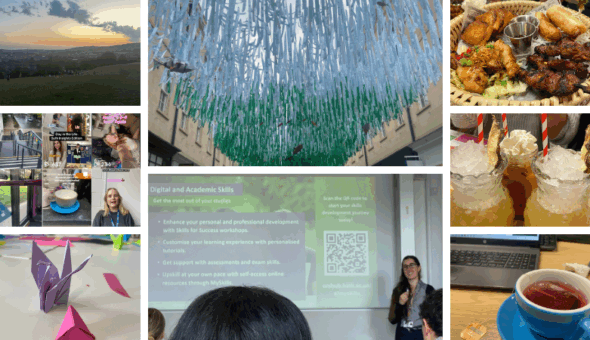Career case studies of former Bath research staff and doctoral students - find out what they're doing now and how they're using the skills from research
Peter Woodman - Environmental risk analyst
Currently, I am the Senior Vice President, CEO and Co-founder of Risk Management Incorporated – Environmental Services, Shirley, MA, USA. We are a Veteran Woman-Owned Small Business celebrating 20 years in business and my wife is President in charge of our Medical Nutrition Therapy Services.
My role includes conducting: Hazardous Waste Site Assessments for hazardous chemicals and radionuclides releases to soil, groundwater, indoor and ambient air and surface water bodies. Hazards identified include chlorinated solvents, PCBs, heavy Metals, petroleum products, PFAFs, and Uranium, Thorium, Radium, Cesium, Strontium, Radon and Plutonium Radionuclides. We conduct Human Health & Ecological Risk Assessments under Federal & State regulations to assess risks from current and potential exposures to these hazards via intentional and incidental ingestion, dermal contact, inhalation and whole-body immersion. We then compare the non-cancer and cancer risks calculated to acceptable Regulatory Risk Limits and develop risk-based remedial measures to clean up the site in a manner protective of public health and the environment.
I also conduct forensic investigations of indoor air health hazards and, where indicated, implement remedial measures to mitigate indoor air exposure pathways and routes of exposure.
In addition, I provide Expert Witness Services in Pharmacology and Toxicology to identify human health risks from actual or potential exposures to hazardous chemicals and pharma products, and conduct workshops in various aspects of the environmental field and lecture and chair sessions at local, national and international Conferences.
Following my B. Pharm (hons), I was awarded an MRC Scholarship in Cancer Research at Bath to undertake a PhD in Molecular Pharmacology and Medicinal Chemistry. I was able to pursue my passion in the synthesis, development and in vitro testing of chemicals to treat cancer. During this period, I had the opportunity, at a conference in London, to meet one of the leading US scientists in cancer drug development, Prof. Charles Heidelberger, from the McArdle Institute for Cancer Research, University of Wisconsin, Madison, WI, USA. Prof Heidelberger synthesized and developed 5-Fluorouracil, one of the first anticancer drugs after Methotrexate, that has been used to treat various forms of cancer, and is still used to day. During my PhD I received several prizes in my field and applied for and was awarded a British Empire Cancer Campaign Fellowship for International studies with Prof Heidelberger, plus a Damon Fellowship for Cancer Research in the US.
After completing my Postdoctoral Training at McArdle, I met a very cute girl at a bus stop in Madison and a year later we were married. At that point I had made the decision to stay in the US, even though I was offered a Lectureship at Imperial College, London. Instead, I accepted an Assistant Membership at St. Jude Children’s Research Hospital, Memphis, TN and worked on the team that developed 6-Azidothymidine (AZT), the first drug to treat Kaposi's sarcoma (a.k.a AIDs) in conjunction with Gertrude Ellion’s team at Burroughs Wellcome, England, UK. Even after this success, I was becoming frustrated with the pace of anticancer drug development. Immunology was in its infancy, as was the mapping of the human genome. However, following the rapid progress in these areas, immunomodulators suddenly became the “Hot Topic” for development of target-specific anticancer agents.
It was around this period that I was approached through an Environmental Protection Agency (EPA) contract in Washington, DC to use my background training in Toxicology to assist in the development of the Health Guidance Manuals to be used in the US “Superfund Program” for the cleanup of hazardous waste sites and the environment. As my involvement grew, I learnt new skills, including modeling exposures to hazardous materials, RESRAD for radionuclides and development of the Human Health & Ecological Risk Assessment process in a document now commonly referred to as “Risk Assessment Guidance for Superfund (RAGS): Part A | US EPA.”
As regards advice for researchers wishing to use their Pharmacy & Pharmacology skills, one can obviously go in many directions. In my case two! For those wishing to follow careers in the USA, you will need at least an Upper Second degree, ideally with one or more awards, including an MRC Scholarship or its equivalent to pursue your Ph.D. Identify your main interests, choose a path, attend meetings and conferences, arrange to meet leaders in your field, ideally from the US, then research your options for your Postdoctoral Research. Use the University’s Library Resources – they were so helpful in identifying available funding mechanisms and of course your advisor and fellow colleagues. BOL – it can be done.
Respond
